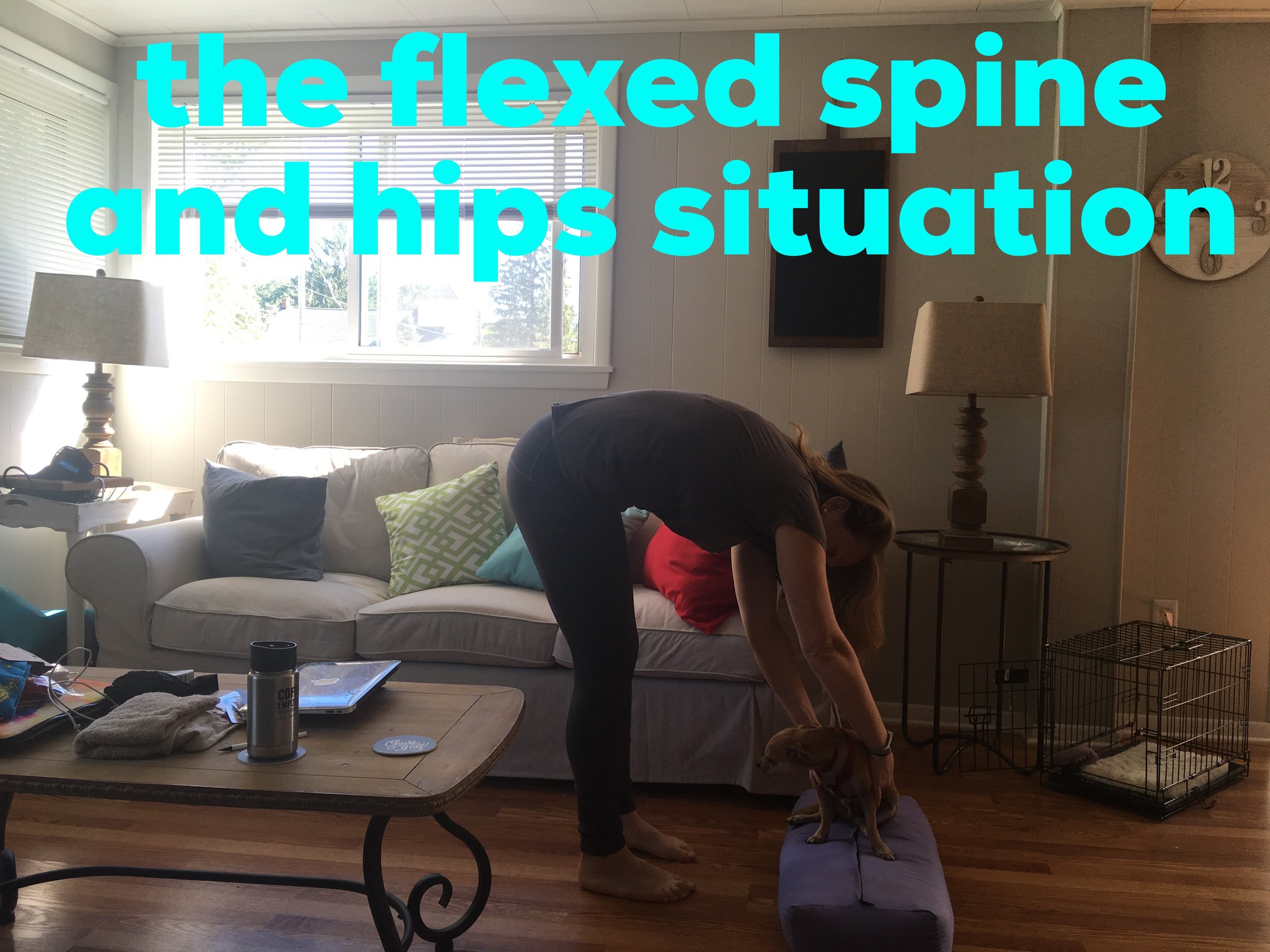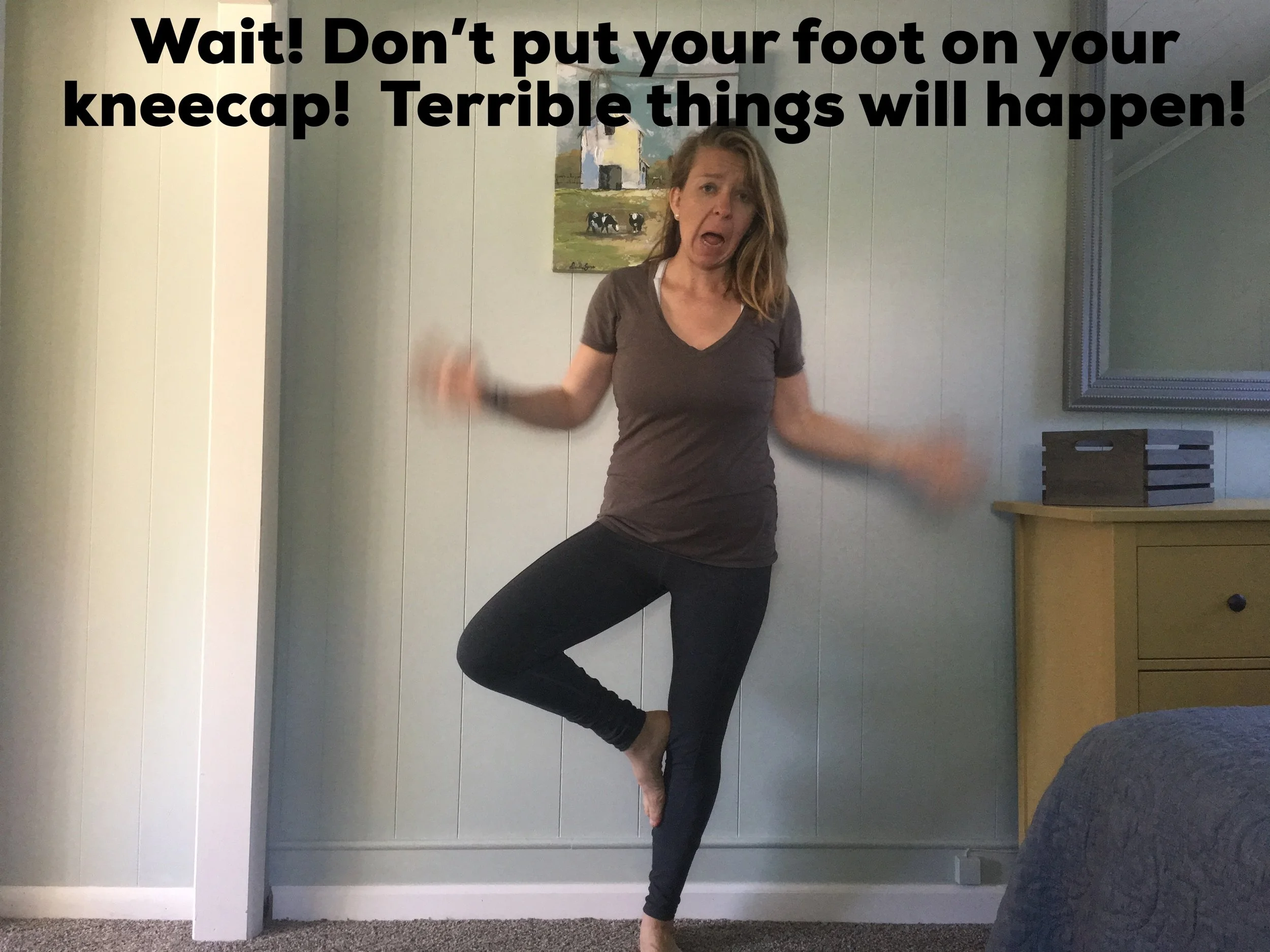Fear Mongering in Teaching: Part 1
Lately, I've been thinking about how we relay content to students, whether it's as a music instructor or movement instructor. I had an interesting experience in a somatic group class this week, which doesn't necessarily reflect the views of all teachers of this discipline, or even the guild or method. Let me give you the context:
This is a super common and useful human movement. My hips are in flexion, but my spine is in neutral-ish, with a hint of extension.
We were working on the hip hinge, which is a fabulous and important human movement, at the baseline of squatting, dead lifting, etc. I love it, I teach it, it's great, and we were looking at it in the context of picking up objects off the floor. Also great. The other people in the class noticed that the hip hinge felt balanced, used the glutes and back body, and felt stronger, which can all be true. The catch is that at some point, the conversation derailed to how moving at all with a flexed spine is bad, and that's where I disagreed strongly. To be clear, this was not only saying that picking things up off the floor with a flexed spine is bad, but that any flexed spine movements are bad. One of the students asked if a forward fold in yoga was injurious, and the teacher said yes, flexing the spine causes damage and low back pain. This was the first thing that made me angry. The teacher also said that it doesn't honor the curves of the spine. This was the second thing that made me angry. What was the group class takeaway from this? That the body should only be moving in neutral all the time to honor the curves of the spine. Is this possible? Not really. Unless you're superhuman, you sleep with a flexed spine, you walk with subtle rotations and side bends and constant movements in the spine and hips, and if you're reading this, you probably play an instrument, drive a car, and move in all sorts of ways both intentionally and accidentally.
In this image, my spine is rounding over to pick up the object. In previous decades, the thought was that spinal flexion to pick up things led to back pain and disc damage. This opinion has since been debated and refuted.
Is flexing the spine all the time a good idea? Probably not. Is it ok to move the spine in different ways if there isn't a pathology or reason not to? YES. Are all spine movements good for all people? NO. Is it a good idea to hip hinge sometimes? Absolutely. Should I flex my spine to deadlift my grandchild? Probably not, although there is research that weighted spinal flexion is ok for some people and is not always correlated with disc damage and back pain. But I'm in favor of strengthening the back body and inviting glutes and hamstrings to the lifting party.
The other piece of this is load and adaptation- how heavy is the object you're picking up? Is your body adapted to doing the movement? How often are you doing the movement? Do you always pick up objects the same way?
Needless to say, I almost jumped out of my skin in this class, because this may then make students afraid to move their spine in the myriad of ways that are possible at any given time. This is what I think of as fear mongering at it's finest, and it happens in music and movement instruction.
This is especially better because my puppy, Milo, is looking photogenic.
Similarly, in yoga and other movement disciplines, there's often a lot of alignment cues that are absolutely meant to be helpful, but can also lead to the idea that there's one right way to do a pose, movement, or task. Let's take tree pose in yoga, or Vrksasana. I was taught to never put the bent knee sole of foot on the kneecap, and that the sole of foot had to be above or below. What's crazy is that students and teachers in training hear this, and instantly think something HORRIBLE is going to happen the minute someone's sole of foot comes up to their kneecap. Every movement depends on the context: the magnitude, the load, the frequency, the knee! I've seen many a group class where the teacher freaked out because a new student put their opposite sole of foot right on the opposite kneecap. This is perhaps not the best approach. (read Jules Mitchell's blog about the knee: hint, it's not just a hinge joint)
Fear mongering is well intentioned and comes from a place of wanting to help students, but it can lead to long term fears that are not helpful. On one hand, we have the dilemma of The Christmas Story Red Rifle gun, "You'll shoot your eye out," which not only doesn't deter Ralph but makes him think once he has one that he did shoot his eye out. On the other hand, there are students who fear every movement because someone has told them that x,y, and z are wrong with them and they can't do anything. Of course if someone has a pathology or injury, that's different, but if someone does not have an issue, how are we conveying information?
As a student in college, I was told by a music instructor to avoid any weight bearing work on my wrists, arms, and shoulders, and that I'd hurt myself. This made me
1) globally weak in my upper body
2) eventually injured from when I did anything
3) convinced I couldn't do anything because I "had weak wrists"
What's true in this situation? We need to gradually build strength and adaptation to load. Do you love yoga but not how it feels on your wrists? You need to build the range of motion and adaptation for that, rather than going once a week for constant wrist extension and then never doing those same movements during the day or week. As a person who now does lots of shoulder training and wrist extension work, it's about incremental progression. Just as we wouldn't expect to play a concerto at tempo in a week, we can't expect our bodies to do foreign movements suddenly without preparation.
The big takeaway for me is that our words as teachers matter immensely, and that when we set up movements as good or bad, our students will take our viewpoints and authority very seriously, almost too seriously. Part 2 to follow!





